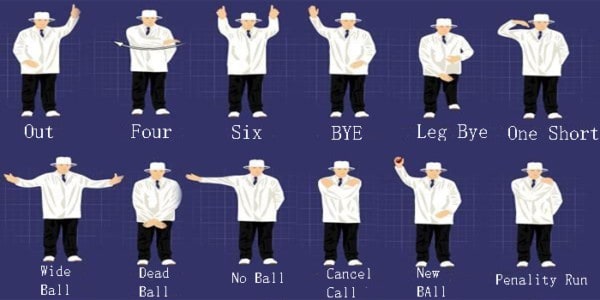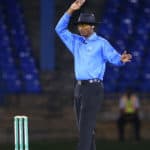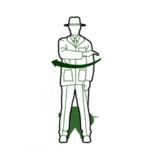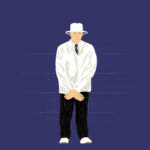
The Umpire is a person who takes all decisions in cricket. While he has the right to make decisions but it must be according to the laws of cricket. He has all records of each delivery, appeal, and wickets. In international matches, two umpires stand on the ground. The first umpire stands at the bowler’s end and the second umpire stands opposite the batsman at square leg. In cricket umpire, hand signals mean a lot to every cricketer & batsman because of the number of cricket decisions going to announce by the umpire hand signals.
When a cricket match is going on, during a cricket match umpire takes many decisions with signals. It’s very difficult to understand cricket umpire hand signals. In today’s article, we will discuss & tell you all cricket umpire hand signals and what they mean in cricket.
Following of Cricket Umpire Hand Signals:-
No Ball Umpire Hand Signal

When the ball is not delivered by legal rules is known as ‘No ball’. If any bowler is delivered ‘No ball’ then he may call or signal by hands. Why umpire declares a delivery as a ‘No ball’ when the ball is above the batsman’s waist, faults in the foot. If the ball is declared as no-ball due to foot faults first umpire signal it as no-ball. Second umpire signals when the ball is above the batsman’s wrist. He shouts no ball or makes a signal with one arm out horizontally out.
At the time of delivery, he checks the bowler’s position. A ‘No ball’ is a gift for every batsman in cricket. It gives one run with an extra one ball to play. According to the laws of cricket if a batsman gets out on ‘No ball’ he will be declared “NOT OUT”. Umpire didn’t count any ball as one of the deliveries in over.
Out Umpire Hand Signal

When a batsman is bowled, run out, or caught out umpire signals him as “OUT” in cricket. Umpire makes a decision if is a fielding side appeal. If a batsman wants to show him honestly, he can walk and declare himself as ‘OUT’. It’s very difficult to make decisions on the ground for umpires. If a batsman is out umpire signal him by raising his hand and index finger.
Not Out Umpire Hand Signal
If a batsman is “NOT OUT” the umpire signal by shaking his hands or shout not out on the ground. Striker’s end umpire plays important role in decision making.
Free Hit Umpire Hand Signal

Umpire going to give a free hit signal if you ball a “NO BALL” in cricket. If the bowler is footsteps over the career or his ball above the waist of the batsman is known as no-ball. He will signal by rotating his finger horizontally over the head.
A batsman will be declared as “NOT OUT” on “NO BALL” if he gets caught out, leg before wicket, or bowled. It’s a very interesting moment to watch free hits in limited-overs. Cricketing fans get crazy on the free hit because the batsman gets a chance to hit balls freely.
Wide Ball Umpire Hand Signal

In a six-ball over if a bowler ball wide ball, the umpire declares it as an illegal delivery as per laws of cricket. It is an illegal delivery because the ball strikes wide from the batsman’s position.
The umpire signals a wide ball by extending arms horizontally. A wide ball doesn’t count in an offer of six balls. The Defending team gets one run on a wide ball. A wide ball gives an extra run and an extra ball to play.
Four Umpire Hand Signal

An umpire signal four if the ball crosses the boundary line in cricket. It cannot be scored by running a batsman need to hit the ball by bats. He signals it by using his arms waving in front of his chest.
It depends on umpires every umpire has their own style to signal four. But umpire should know all laws related to how to signal a four.
Six Umpire Hand Signal

An umpire signal six if the batsman hits a ball over the boundary line. He signals by raising both hands above the head.
Now a day, every umpire has its own style to signal six. To entertain cricketing fans, they do it in a celebratory manner. A batsman gets six runs on six; a ball must land above the boundary line.
Short Run Umpire Hand Signal
If a batsman fails to complete the run by running on the crease umpire signal it as a “SHORT RUN” in cricket. He signals a short run by tapping the shoulder with his fingers. An umpire had to inform scorers if the batsman scored more than one run.
Leg Bye
The umpire signal’s leg bye by touching the raised knee.
BYE
The umpire signals bye’s by one open hold up the palm above the head.
Dead Ball Umpire Hand Signal

An umpire declares a dead ball when a ball is not considered in play. He signals by using his wrists as a cross or uncross it below waists. It’s necessary to inform the “DEAD BALL” to the bowler.
Very interesting I often wonder about these signals used.
No indication of penalty runs